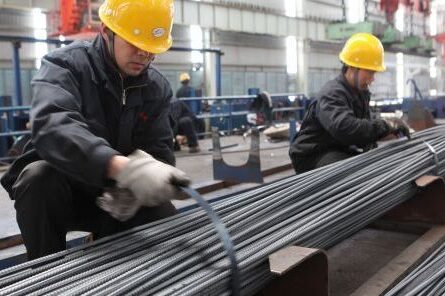>>REAL-TIME UPDATES IN THE WIRE. CLICK HERE<<<
China’s ongoing energy use restrictions and power crunch are hurting industrial production across several regions and dragging on the country’s economic growth, analysts say.
The current round of power shortage is mainly due to the country’s so-called “dual energy control”, referring to the country’s efforts to cut energy consumption and energy intensity, the amount of energy consumed per unit of GDP, analysts say.
China aims to lower its energy consumption per unit of GDP by around 3 per cent in 2021 to meet its climate goals. However, only 10 of 30 provinces managed to achieve their energy goals in the first half of the year.
On August 12, the National Development and Reform Commission (NDRC), the top economic planner, published a list of of provinces that failed to meet the “dual energy control target” during the first six months of the year. The provincial governments have introduced measures to limit power use by high energy-consuming industries such as steelmakers, coal miners, non-ferrous metal producers, chemical companies and building material providers.
According to statistics by the China International Capital Corporation (CICC), a total of 17 listed companies had announced production suspension this month as of September 23, the second-highest level for the same period and only after May 2018 during the peak of China’s efforts to cut overcapacity.
Most of the companies that have announced production limits so far this year were in basic chemical industry (19 companies), non-ferrous metal companies (19 companies) and coal miners (9 companies) and a majority of them are located in Henan province, Jiangsu province and Shandong province, according to CICC.
“The impact of power supply constraints are expected to last,” according to a CICC research note.
About 67 per cent of China’s power supply comes from coal-fired power plants, but China’s coal supply is in an extreme shortage, said Lu Ting, chief China economist at Nomura.
In the period of January – August this year, China’s raw coal output increased by only 4.4 per cent from a year ago, while coal imports slumped by 19.5 per cent, sending coal prices soaring and dampening power plants’ production.
China’s industrial production is expected to see continued restrictions from energy control measures in the fourth quarter, though there may be some marginal improvement compared to September, according to CICC.
Power rationing situation is likely to improve slightly in October, but the tightness is unlikely to ease before the 2021 United Nations Climate Change Conference to be held in November in Glasgow 和 China’s 2022 Winter Olympics, said Lu.
According to estimates by Guosen Securities, output of ferrosilicon, electrolytic aluminium, non-ferrous metals, silicomanganese and cement in the nine provinces that failed to lower energy intensity in the first half account for more than 30 per cent of China’s total output, which could lead to further tightness in supplies and drive the growth of producers’ price index (PPI ) even higher in October.
Driven by surging commodity prices, China’s PPI jumped by 9.5 per cent year over year in August, the fastest growth since September 2008, according to official data.
Given the continued energy control measures and coal shortage, China’s PPI growth is expected to be maintained above 9 per cent in the rest of the year, CICC estimates.
The transmission from PPI growth to non-food CPI growth will continue and China’s CPI growth is expected to accelerate in the coming months, likely to jump above 2 per cent in November, said CICC. Official data showed that non-food CPI grew by 3 per cent year over year in August, the fastest growth since 2019.
Power use limits will continue to bring disruptions to industrial production and drag on China’s economic growth.
Based on CICC’s statistics, the combined industrial production of the provinces that failed to meet energy control targets in the first half accounts for about 70 per cent of China’s total industrial output.
The impact of the measures are mostly felt in September and CICC estimates that the growth of industrial output this month will slow to 4 – 4.5 per cent year over year from 5.3 per cent in August, and that will knock off 0.1 – 0.15 percentage point from the economic growth in the third quarter.
Assuming that 30 per cent of the industrial production currently subject to power use restrictions will continue to suffer restrictions in the fourth quarter, that will drag down the economic growth in the last three-month this year by around 0.1 – 0.15 percentage point, said the bank.
Nomura expects bigger impacts of the power use restrictions on China’s economic growth. It cut its third and fourth-quarter GDP growth forecasts to 4.7 per cent and 3 per cent, respectively, from 5.1 per cent and 4.4 per cent previously, and its full-year forecast to 7.7 per cent from 8.2 per cent.
Notably, the bank estimates that China GDP will drop by 0.2 per cent in the third quarter from the previous three-month, citing the impacts of the slowdown in the real estate sector and power restrictions.
Morgan Stanley analysts wrote in a note on Monday that the steel, aluminium and cement industries have bee hit hard by the output curbs, with about 7 per cent of aluminium production capacity suspended and 29 per cent of national cement production affected. Paper and glass could be the next industries to face supply disruptions, it said.
Xing Ziqing, chief China economist at Morgan Stanley, said China’s GDP is expected to grow by 4.5 per cent year over year in the third quarter and if there no policy changes, the growth could slow to 4 per cent in the fourth quarter.

